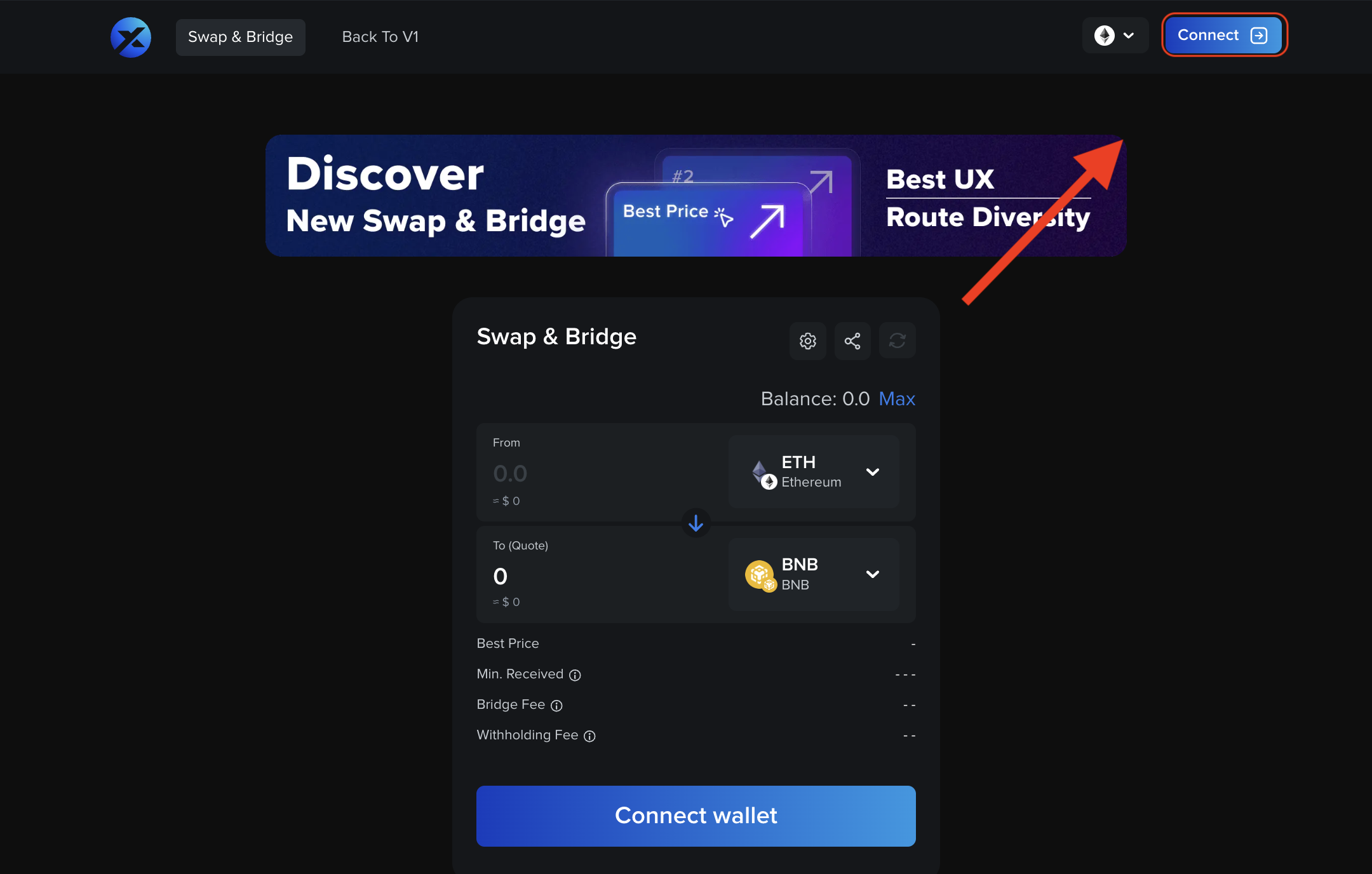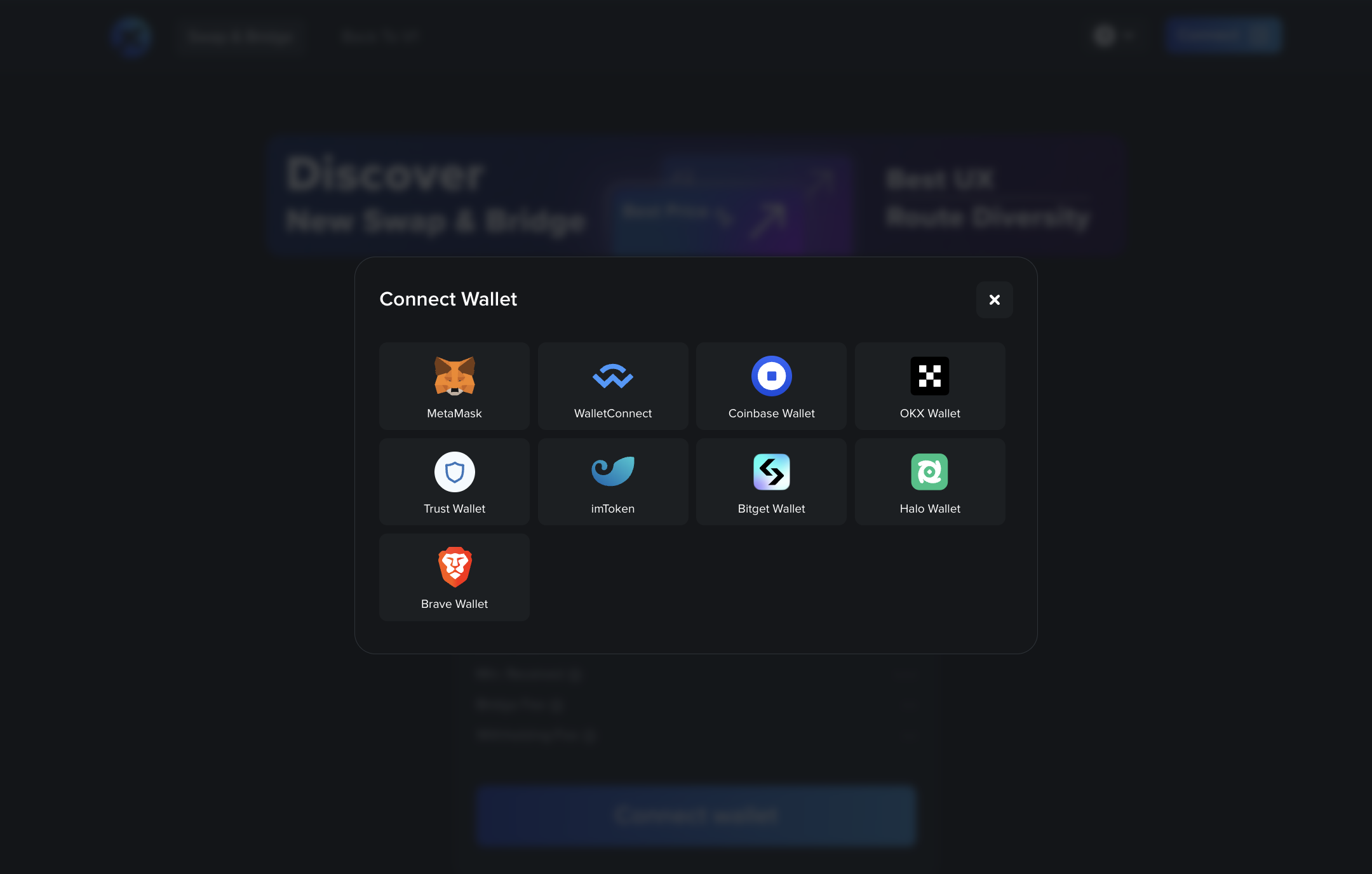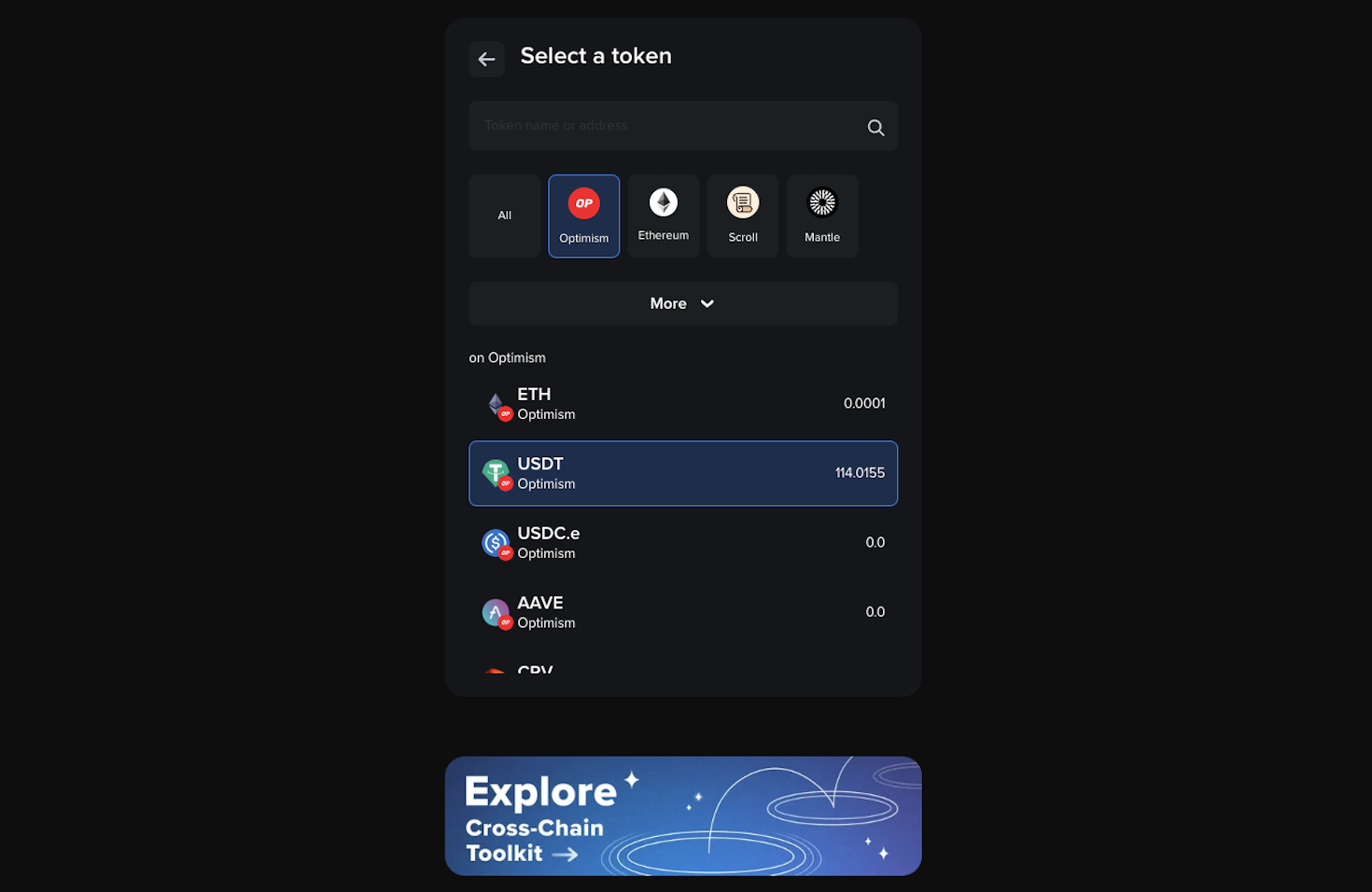
Curious about the Cronos blockchain? Read on to find out all about its connection with Crypto.com, some of its pros and cons, and some of the highlights from the Cronos ecosystem!
What is Crypto.com? Exploring its Relationship with Cronos
Crypto.com, founded in 2016, bills itself as the world’s premier crypto trading platform, enabling users to buy over 250 cryptocurrencies in just one place. With over 80 million users all over the world, it’s easily one of the biggest and most popular platforms out there. Regardless of whether you’re a Web3 newbie or a veteran, you’ve surely heard of or use Crypto.com.
Cronos, on the other hand, is a chain running parallel to the Crypto.org chain. It aims to massively scale the Defi ecosystem—learn more about it below!
What is the difference between Cronos and Crypto.org chain?
These two chains are built by Crypto.com, the key differences between Cronos and the Crypto.org Chain are based on their technological foundations and intended use cases:
Cronos is built on Ethermint, making it fully compatible and interoperable with Ethereum. This allows for the rapid porting of apps and smart contracts from Ethereum and other EVM-compatible chains, making Cronos ideal for DeFi and other applications that require smart contract functionality.
Crypto.org Chain, on the other hand, is not based on Ethermint and thus does not support EVM-compatible apps and smart contracts. It serves as a high-speed, low-fee blockchain primarily aimed at payments and NFTs, leveraging a different technological framework that doesn’t prioritize EVM compatibility.
In essence, Cronos is designed to support a wide range of decentralized applications with its EVM compatibility, while the Crypto.org Chain focuses on providing a robust infrastructure for payments and the trading of NFTs.
What is Cronos?
Cronos, powered by Ethermint, enables the quick and easy porting of apps and smart contracts from Ethereum and Ethereum Virtual Machine (EVM)-compatible chains.
With the Inter-Blockchain Communication (IBC) Protocol that enables it to communicate with other IBC-enabled Cosmos-based chains, Cronos is built for interoperability—allowing easy transfers with low costs, a high throughput rate, and fast finality. It’s also scalable, processing more transactions per minute than Ethereum
Moreover, having been built on the Cosmos SDK, it’s one of the few chains that straddle both Ethereum and Cosmos. It’s also said to be 90% more energy efficient than Proof of Work (PoW) blockchains.
Aside from that, Cronos Labs has also partnered with Crypto.com, the latter of which has built a number of products on the chain and enables access to on-chain projects. Furthermore, Crypto.com products such as the Crypto.com App, Crypto.com Exchange, and DeFi Wallet all support Cronos. That means you can easily bridge your assets from the App or the Exchange to Cronos wallet addresses.
Tl;dr,
- With IBC Protocol, Cronos is capable of interoperating between both Ethereum and Cosmos
- Cronos aims to massively scale the Web3 community—supporting DeFi, Web3 gaming, NFTs, and the Metaverse
- Cronos allows seamless integration with the Crypto.com ecosystem while providing low-cost transactions and high energy efficiency
Cronos’ Pros and Cons
Let’s take a deeper look into some of the advantages and disadvantages of Cronos.
Pros
- Scalability: Cronos has the ability to process a higher volume of transactions per minute compared to Ethereum, which means it’s faster, cheaper (less than US$1 per transaction), and more sustainable to execute smart contracts
- Interoperability: The IBC Protocol enables interoperability as well as bridging to the Crypto.org chain and other IBC-enabled chains, enabling transfers, services, and connections without encountering issues inherent in other blockchains
- Integration with Crypto.com Ecosystem: Cronos is a gateway to a powerful ecosystem that includes a suite of products and apps that over 80 million users interact with
Cons
- Competitiveness: The Crypto.com exchange still lags behind competitors like Binance or Coinbase, which are in positions of dominance in the CEX market
- Controlled by Crypto.com: Cronos is not a fully decentralized blockchain like Bitcoin or Ethereum. It’s developed and operated by Crypto.com, raising concerns about centralization and potential manipulation by the company.
- Dependence on Crypto.com: The success and future of Cronos are heavily tied to the success and reputation of Crypto.com
Cronos’s Future Outlook
Cronos has established itself as part of the top 15 in the world in terms of total value locked, especially as it presents itself with a coin with strong potential. Being compatible with the EVM provides numerous advantages for dApp development as well. As time passes and the ecosystem grows, we’ll be able to see how it progresses and improves in standing compared to its bigger competitors.
Cronos vs. Other L1 blockchains
Let’s take a look at the state of Layer 1 blockchains and how Cronos measures up to them across multiple factors.
| Chain | TVL | Total Unique Address | MarcketCap | Average Gas Fee |
|---|---|---|---|---|
| Cronos | $0.45B | 1.3M | 3.66B | $0.05 |
| Ethereum | $52.7B | 260M | 429B | $1.2 |
| BNB Chain | $5B | 427M | 58.8B | $0.1 |
| Solana | $2.6B | 34.5M | 54.8B | $0.005 |
| Polygon | $1B | 407M | 10.1B | $0.04 |
Analyzing Cronos compared to leading blockchains like Ethereum, BNB Chain, Solana, and Polygon reveals both potential and challenges. With a competitive average gas fee of $0.05 and a respectable market cap of $3.66B, Cronos positions itself as an affordable and substantial platform in the cryptocurrency space. However, it faces the challenge of a smaller user base and lower TVL when compared to giants like Ethereum and BNB Chain, indicating room for growth in adoption and network activity.
To bolster its position, Cronos could benefit from strategies aimed at increasing its unique dApps and partnerships, potentially attracting a wider user base by capitalizing on its low transaction costs. Enhancing user adoption and expanding its DeFi and dApp ecosystem could make Cronos a more formidable competitor in the rapidly evolving blockchain landscape.
Ecosystem on Cronos
No matter your interests—buying and selling unique NFTs, exploring the metaverse, lending, borrowing, or trading—there’s definitely a Cronos project out there to suit your tastes.
Here are a few highlights from the ecosystem.
DEX – VVS Finance
This leading Decentralized Exchange (DEX) stands for “Very Very Simple Finance” and aims to simplify DeFi for everyone. Launched in November 2021, it hit an all-time TVL of US$1.4 billion in just three months. They’re also the first Automated Market Maker DEX built natively on top of the Cronos chain.
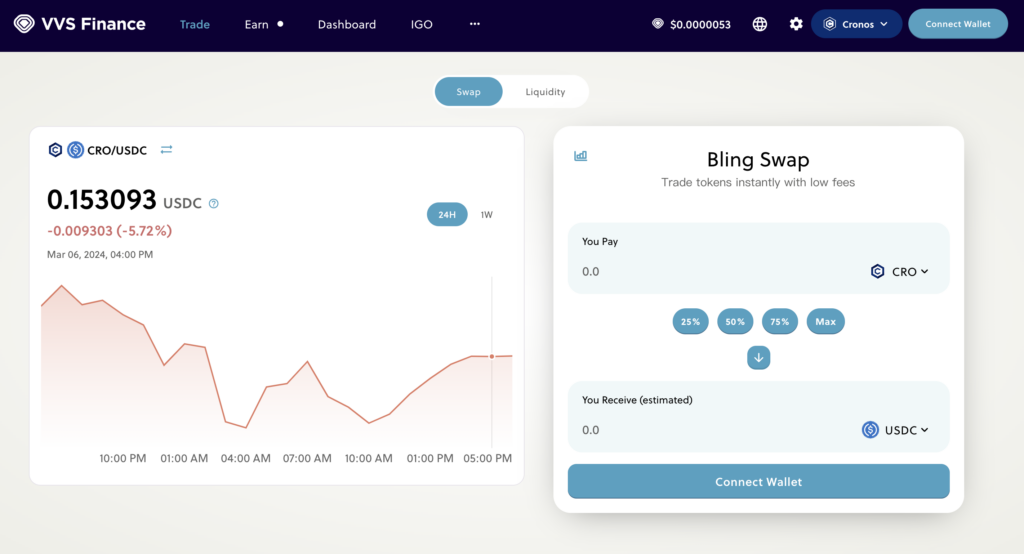
Lending Protocols – Tectonic
Tectonic is a “cross-chain money market for earning passive yield and accessing instant backed loans.” Users can generate passive yield on their assets and earn APYs based on a dynamic rate.
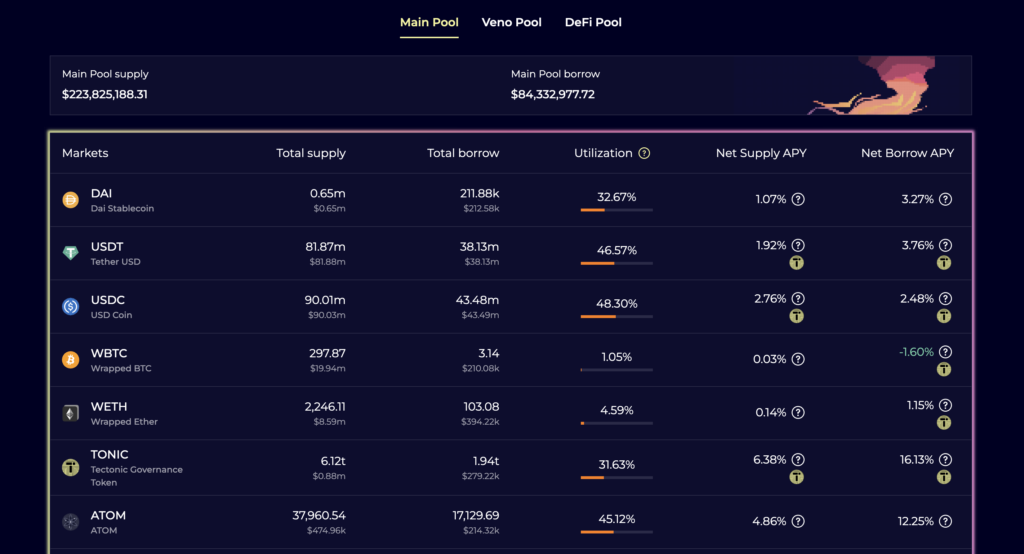
Derivatives – Fulcrom
Fulcrom allows anyone to invest quickly and easily “at a glance.” Users can trade BTC, ETH, and other cryptocurrencies directly from their wallets on Cronos!

Liquid Staking – Veno
Veno Finance enables users to participate in “simple and secure liquid staking.” Stake your tokens in exchange for liquid tokens according to current exchange rates, use these liquid tokens across partner protocols to earn rewards, and unstake to redeem the tokens and rewards.

Tool – Cronos ID
Cronos ID helps users interact and transact easier by shortening long wallet addresses. Create one link for your identity across Web3, including your email, social pages, and website. No more worrying about giving the wrong addresses, with one unified address, you can send and receive digital assets quickly and easily.

To explore the ecosystem further, check out the Cronos ecosystem website for all the latest information on popular and trending projects.

How to Bridge to Cronos?
Given the limitations of the Cronos Bridge Web App, exploring third-party cross-chain bridges to facilitate asset transfers to Cronos is a no-brainer. XY Finance provides a user-friendly and efficient way to do exactly that.
XY Finance is a cross-chain bridge aggregator that operates on 20 EVM chains, including BNB, Ethereum, Avalanche, and more. XY Finance’s user-centric approach enables easy token swaps between different chains—including Cronos—providing users with the best option with optimum prices.
(Fully understand XY Finance: What is XY Finance? The cheapest cross-chain bridge aggregator that operates on 20 EVM chains)
Don’t waste your time! You can now bridge tokens to Cronos with this simple guide:
- Visit XY Finance and connect your Wallet.
- Select the network you want to transfer tokens from (Ethereum, Polygon, Arbitrum, Avalanche, Optimism + 15 others).
- Select the token you want to bridge from your network to Mantle and input the amount.
- Review and confirm the transaction. Your tokens will arrive in under 5 minutes.
(Encountering any problems while bridging? Check out our comprehensive tutorial.)
You’re all prepared! Hit the button and begin your exploration of the Cronos universe!
About XY Finance
XY Finance is a cross-chain interoperability protocol aggregating DEXs & Bridges. With the ultimate routing across multi-chains, borderless and seamless swapping is just one click away.
XY Finance Official Channels
XY Finance | Discord | Twitter | Telegram | Documents | Partnership Form

